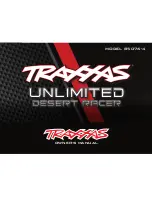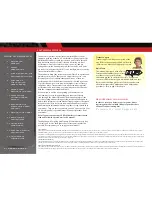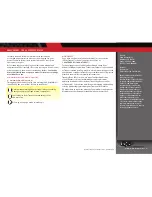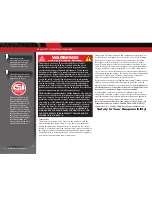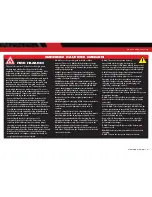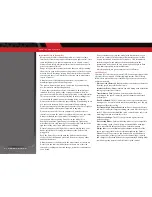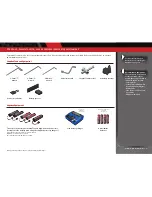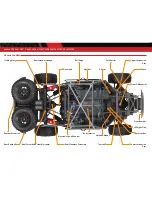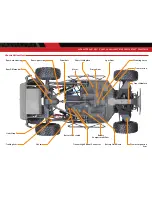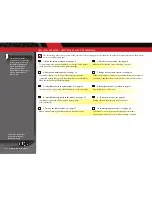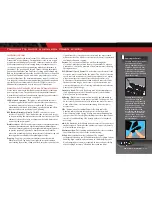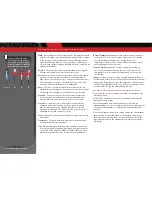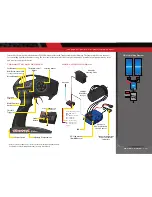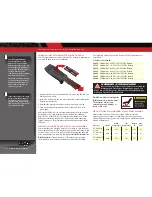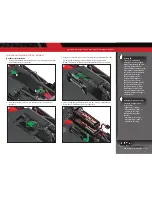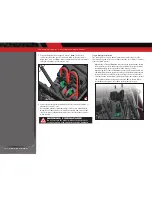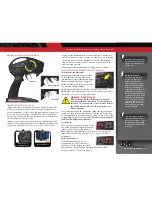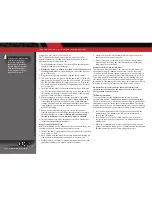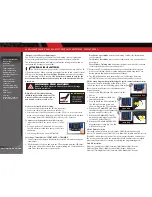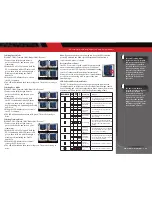
6 • DESERT RACER
Important Points to Remember
• Because your model is controlled by radio, it is subject to radio
interference from many sources that are beyond your control. Since
radio interference can cause momentary losses of radio control,
always allow a safety margin in all directions around the model in
order to prevent collisions.
• Range test your radio system in the area that you will be running
the model to ensure that you have range that covers the area you
want to drive. After range testing, drive slowly in the area at first
to make sure there is no interference that can cause momentary
lapses of control.
• Always use new or freshly charged batteries in your model to
maximize signal power output and range.
• The motors, batteries, and speed control can become hot during
use. Be careful to avoid getting burned.
• Choose the right location to drive. Your model is absolutely not
intended for use on public roads or congested areas where its
operation can conflict with or disrupt pedestrian or vehicular traffic.
This is to prevent the possibility of injury or death resulting from
collision with the model by another human being or animal.
• Do not drive the Desert Racer by yourself. Bring a friend along to act
as a spotter to alert you if a person or animal is approaching.
• Do not operate your model at night, or anytime your line of sight to
the model may be obstructed or impaired in any way.
• Do not drive the model close to you where a mistake or loss of
control could cause the model to collide with you or any spectator.
• Always carefully inspect your model for damage or loose
components before running. Do not drive the model if it is
damaged in any way. Tighten any loose hardware. Tighten the
wheel nuts before each running session and periodically check the
tightness of the wheel nuts while you are running.
• Never pick up the model by its tires or wheels. Always keep your
hands safely clear of moving parts whenever the batteries are
plugged in.
• Keep the Desert Racer stored with the batteries removed, out
of the reach of children and protected from access by any other
unauthorized driver.
• Always disconnect the batteries in the model when it is not in use.
Never store the vehicle with batteries in the model, as this can
cause a fire leading to property damage, serious personal injury or
even death.
• Do not continue to operate the model with low batteries or you
could lose control of it. Indications of low battery power include
slow operation and delayed vehicle response. Stop immediately
at the first sign of weak batteries. When the batteries in the
transmitter become weak, the red power light will begin to flash.
Stop immediately and install new batteries.
• Most importantly, use good common sense at all times.
Speed Control
Your model’s electronic speed control (ESC) is an extremely powerful
electronic device capable of delivering high current. Please closely
follow these precautions to prevent damage to the speed control or
other components.
•
Disconnect the Battery:
Always disconnect the battery or batteries
from the speed control when not in use.
•
Insulate the Wires:
Always insulate exposed wiring with heat shrink
tubing to prevent short circuits.
•
Transmitter on First:
Switch on your transmitter first before
switching on the speed control to prevent runaways and erratic
performance.
•
Don’t Get Burned:
The ESC and motor can become extremely hot
during use, so be careful not to touch them until they cool. Supply
adequate airflow for cooling.
•
Use Traxxas High-Current Connectors:
Do not change the battery
and motor connectors. Improper wiring can cause fire or damage to
the ESC. Please note that modified speed controls can be subject to
a rewiring fee when returned for service.
•
No Reverse Voltage:
The ESC is not protected against reverse
polarity voltage.
•
No Schottky Diodes:
External Schottky diodes are not compatible
with reversing speed controls. Using a Schottky diode with your
speed control will damage the ESC and void the warranty.
•
Always
adhere to the minimum and maximum limitations of the
speed control as stated in the specifications table in the Owner’s
Manual. Your ESC operates on two batteries. Do not mix battery
types, capacities, or charge levels; use the same voltage, capacity,
and charge level for both batteries. Using mismatched battery packs
could damage the batteries and electronic speed control.
SAFETY PRECAUTIONS

